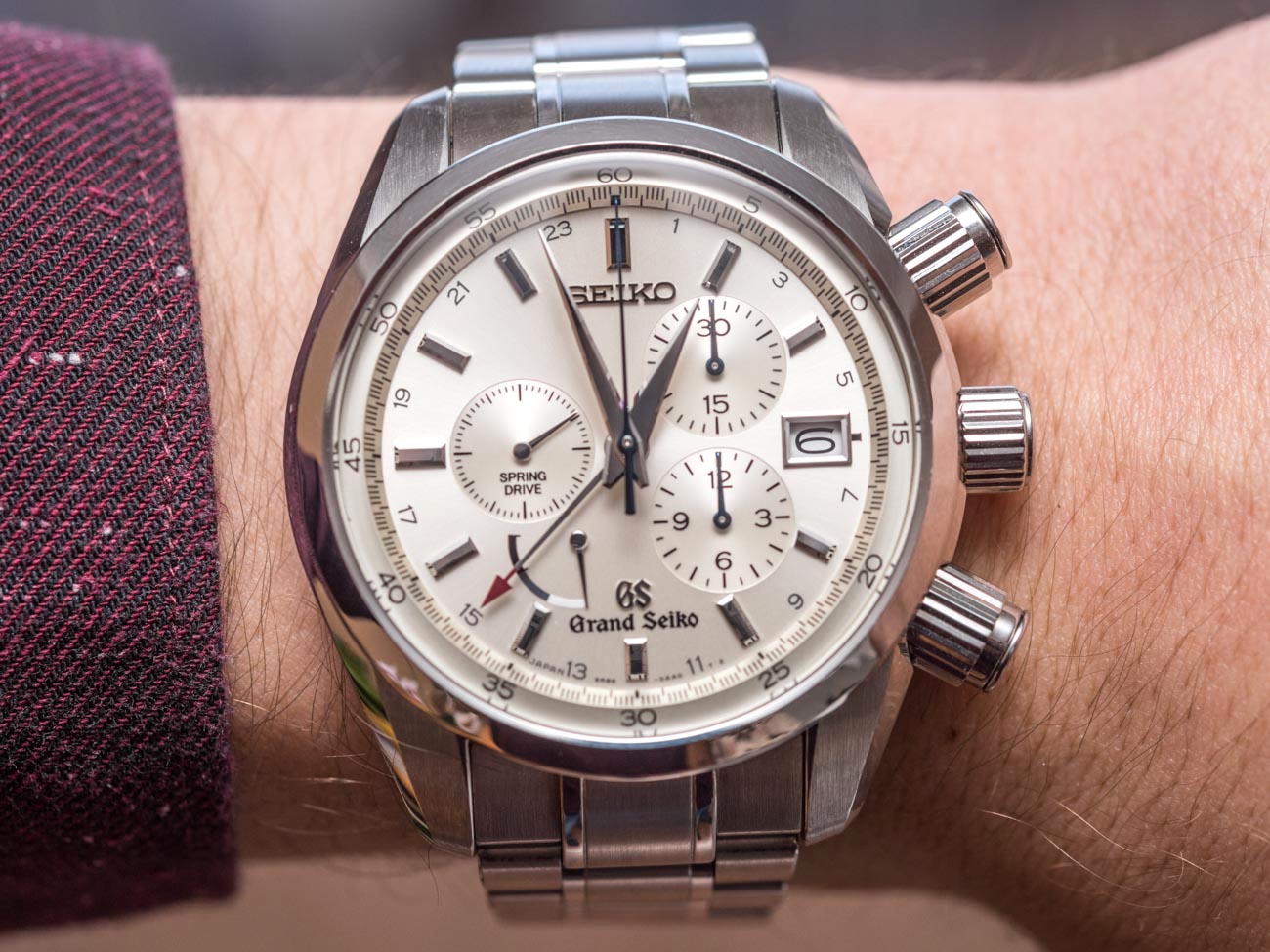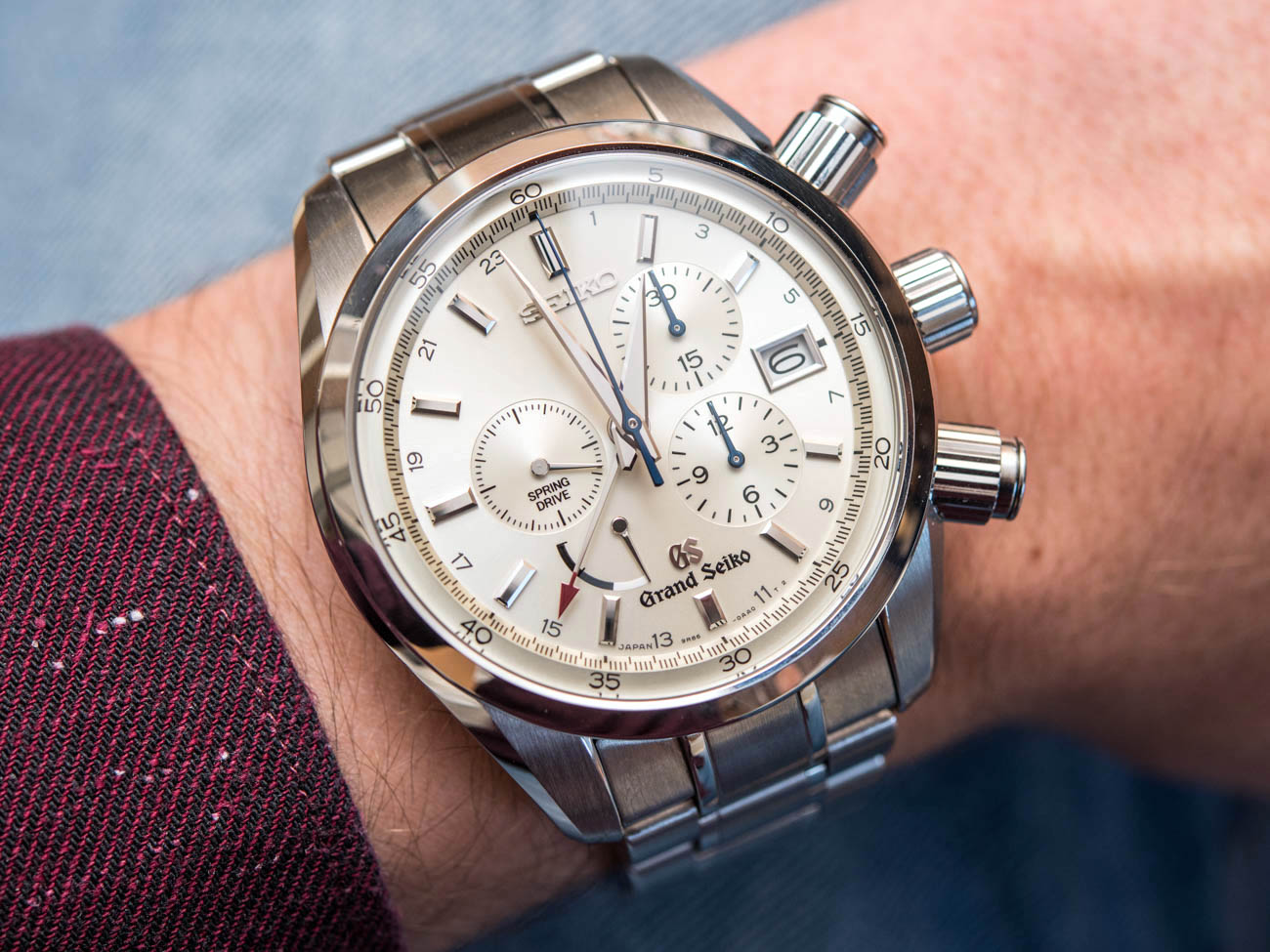
I’ll start with what I acknowledge is a bold statement: the Grand Seiko Spring Drive Chronograph SBGC001, in its entirety, as it is out of the box, is exactly the package of design, movement, functionality, technology, accuracy, and value that one or more major Swiss brands should at least be trying to offer.
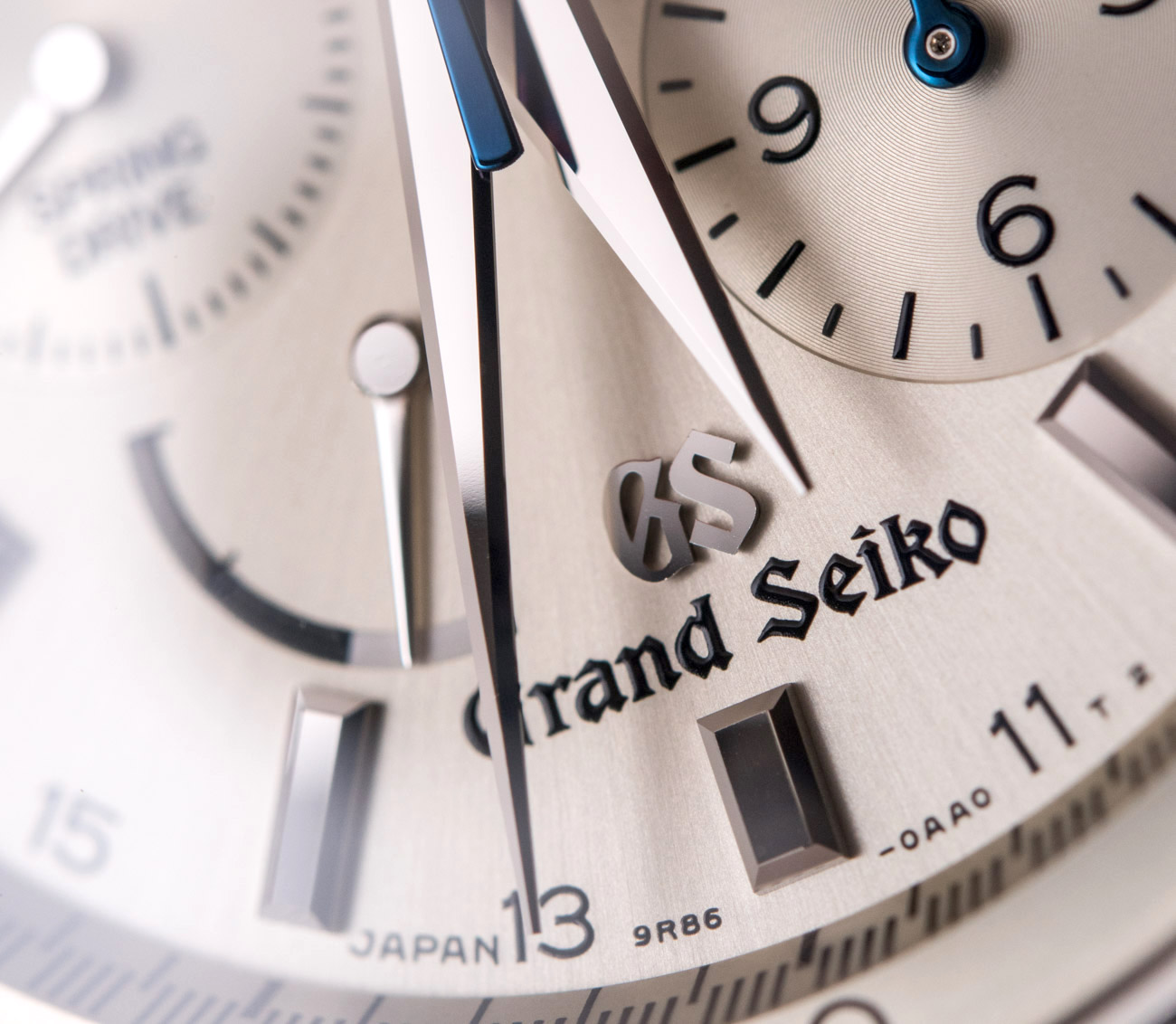
You see, even before I typed a single word of it I knew: this review of the Grand Seiko Spring Drive Chronograph SBGC001 was going to be the most challenging watch review I’ve written to date. The reason is deceivingly simple, though: I personally consider the SBGC001 to be among the absolute best watches out there, available at any price right now on the market. I have given that statement a lot of thought throughout several weeks of careful consideration and countless comparisons to alternative brands and models. So, where’s the challenge in creating this review? Well, it is in conveying everything that renders this watch, to me, all the watch one could ever need. Here we go.

I’ll address everything from wearability through movement functionality all the way to a chapter dedicated to the pushers and crown (yes!), but allow me to take a few steps back and begin with a broader look at the segment of luxury chronographs to determine how the Grand Seiko Spring Drive Chronograph SBGC001 fits in it (or doesn’t).
It has happened more times than I would care to count that as some major Swiss brands debut a new-ish luxury chronograph – these days pretty much exclusively with a five-figure price tag – fans of said brands (or just the segment) rightfully cry out something like “there’s nothing new about this watch!” or “a new bezel material/color scheme doesn’t make this a new watch!”
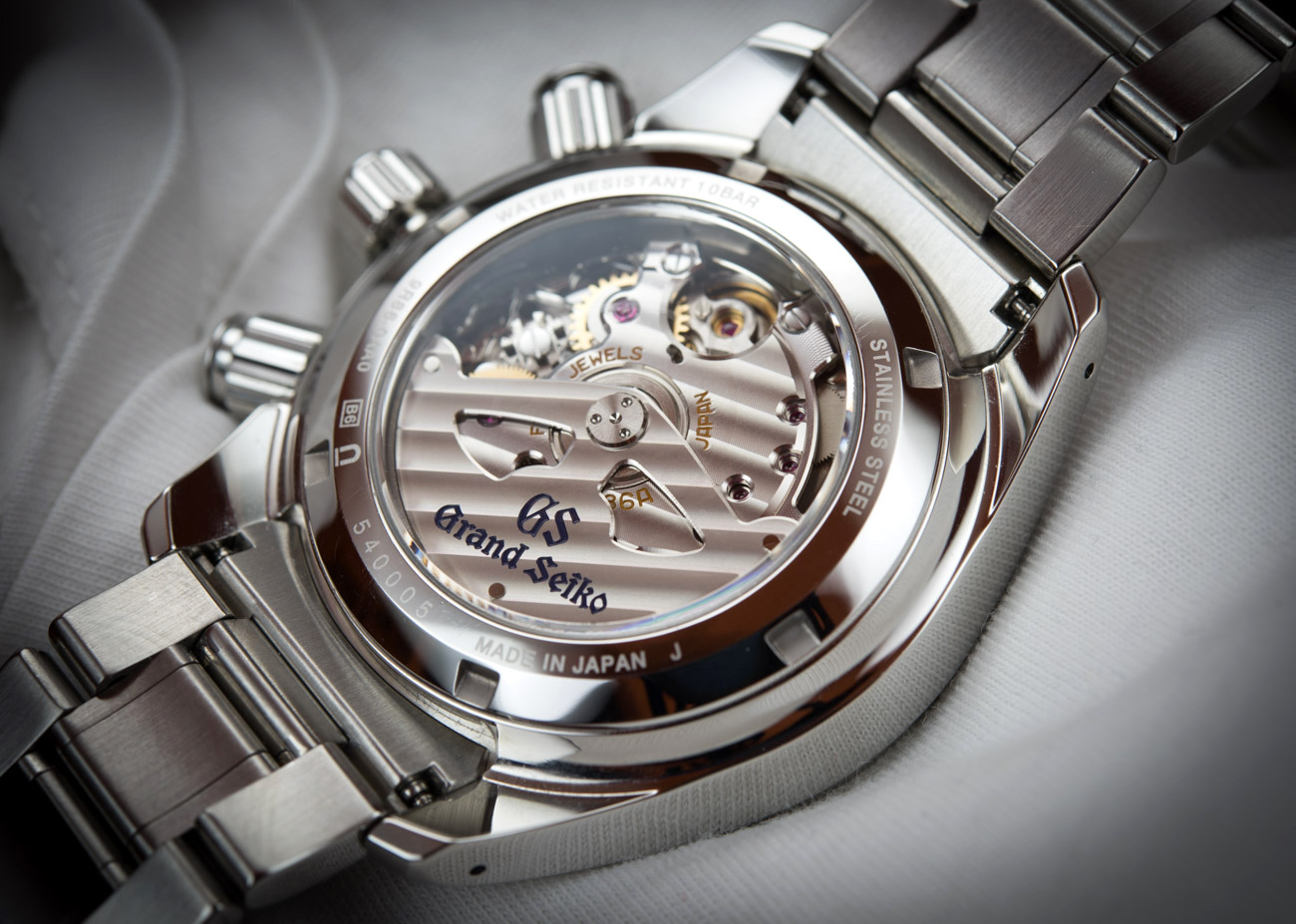
Let’s be fair. Honorable efforts have been made by Omega’s Master Chronometer calibers, with a few chronographs now starting to feature their anti-magnetic technology (like this Moonwatch), but said examples retail for around $11,000. At the same time, Rolex’s (frankly, awesome) 4130 chronograph caliber of the Daytona remains largely unchanged since its debut in 2000, apart from it passing more stringent in-house tests. We could mention the Heuer-01, but apart from it being available at relatively competitive price points, the movement itself has no new technological features – it is “just” a nice chronograph. The same goes for pretty much all other “new chronographs”: have there been any truly new in-house chronographs released in the last few years? Sure, from Alpina through Cartier to Christopher Ward, but none have offered any genuine advancements apart from claiming a manufacture status.
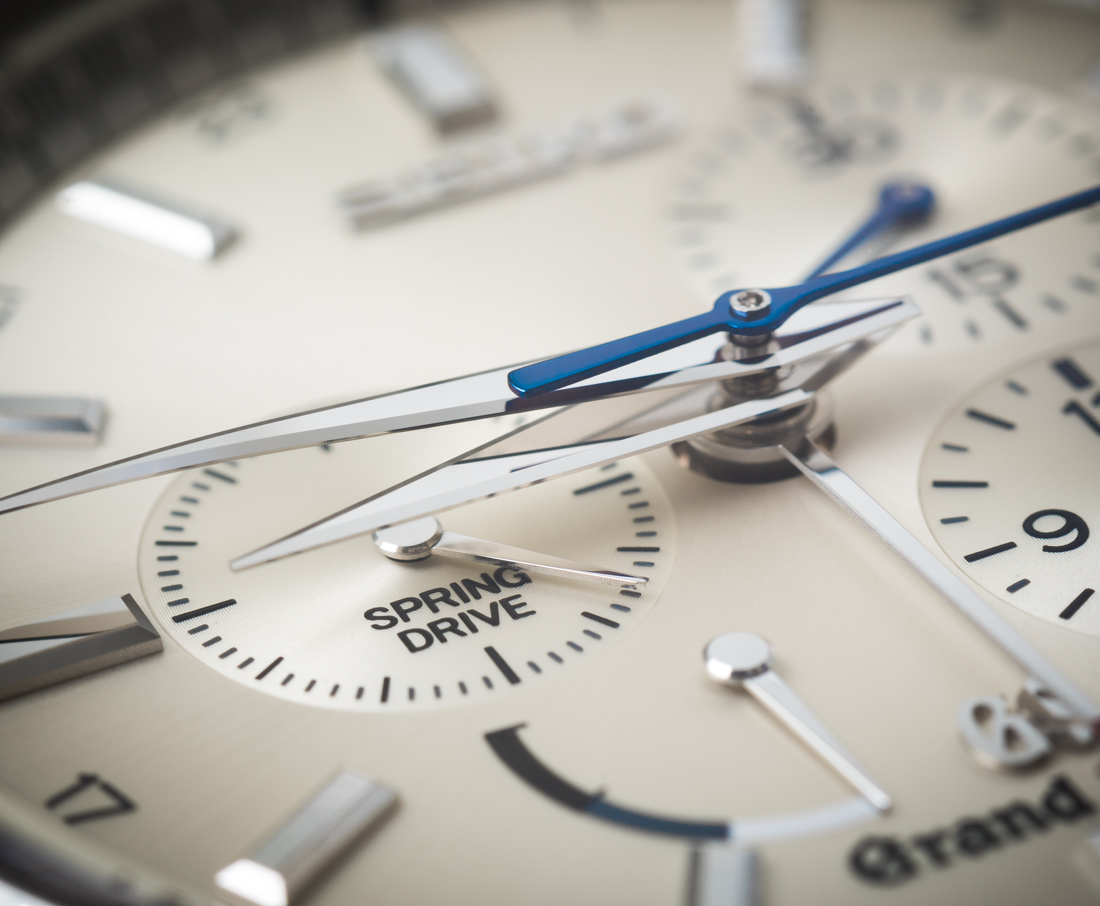
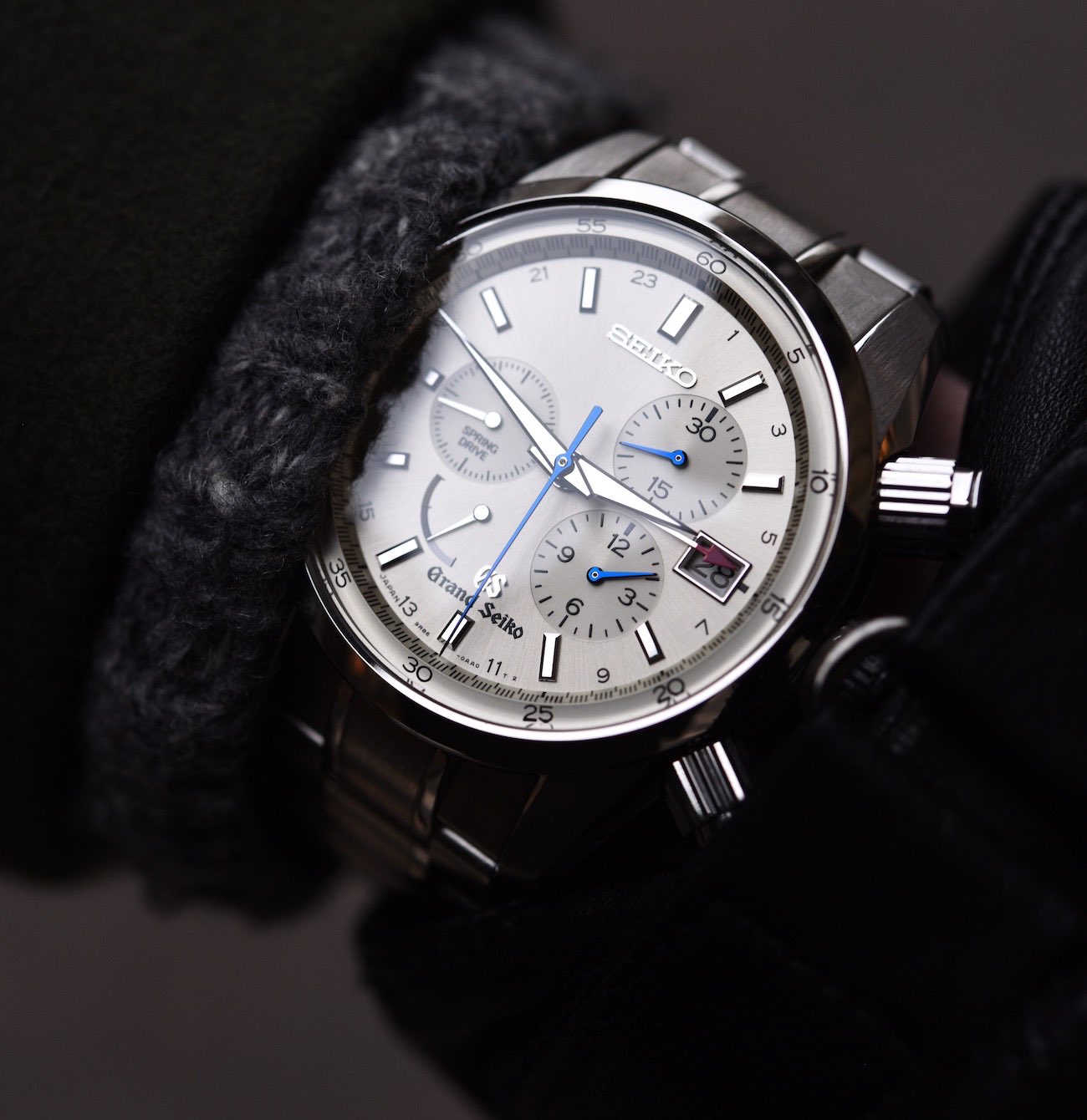
The point I want to make is that it was not the Swiss, but the Japanese who had the motivation, funds, and know-how to produce something (in truth, currently the only thing) that I personally consider a true advancement for mass-produced mechanical chronograph movements, a sort of leap forward that implies we have in fact entered the 21st century.
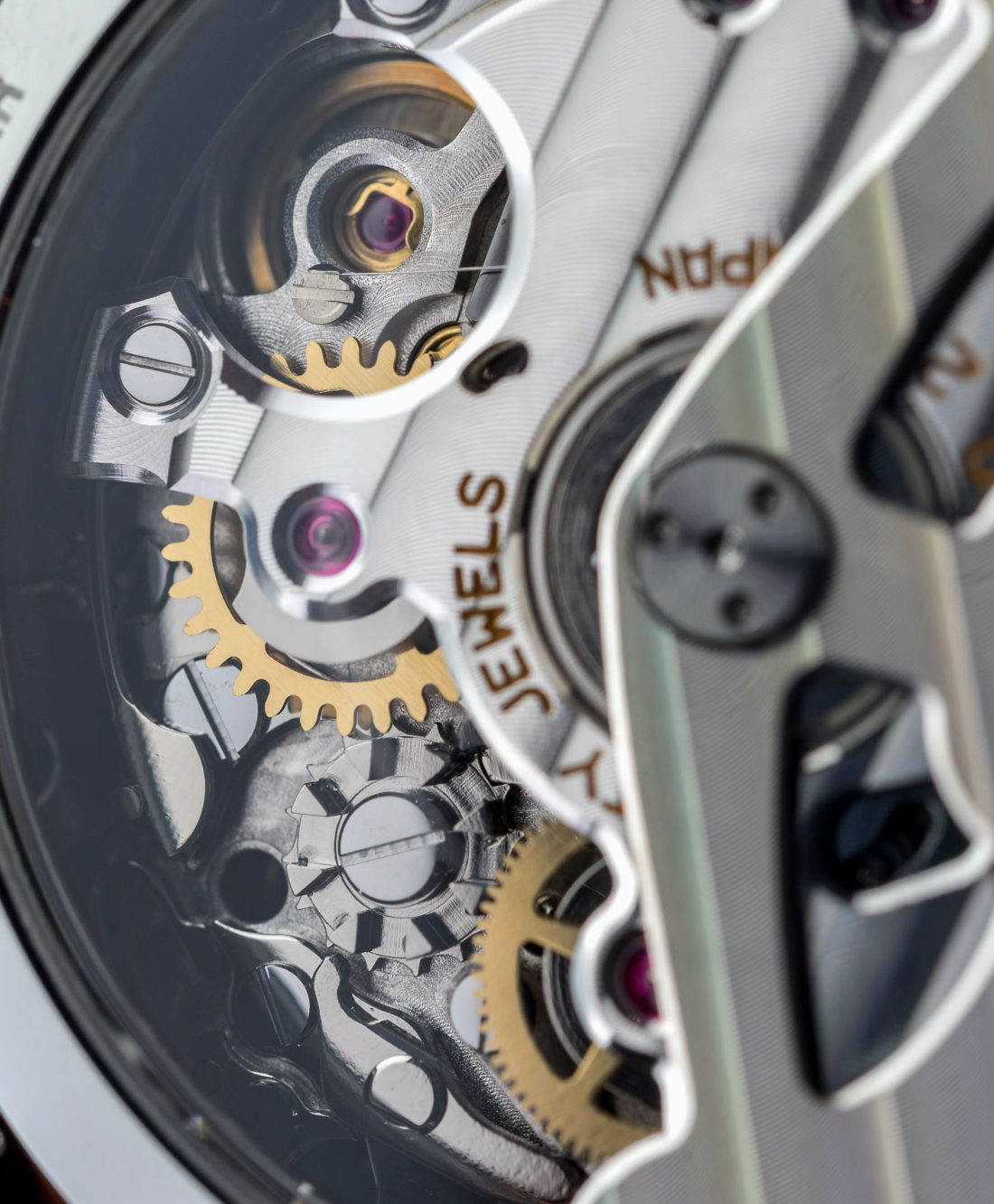
The History & Functionality Of Spring Drive
If you haven’t already, may I at this point suggest that you read my comprehensive article we published yesterday on the functionality and history of Spring Drive, where we discuss its ins and outs including the ingenious technological advancements it took Seiko to, after some thirty years of development, bring Spring Drive to the global market. Understanding what Spring Drive is and how it works is essential to understanding how the Grand Seiko Spring Drive Chronograph SBGC001 and its brethren differ so vastly from any other luxury chronograph for sale today.
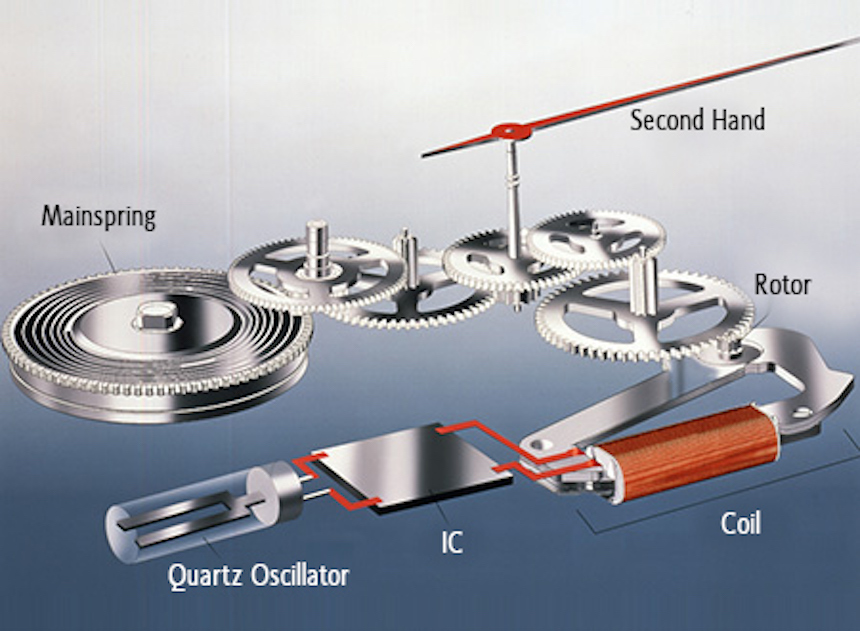
In a nutshell, Spring Drive is a unique combination of a mechanical and a quartz-regulated movement. Spring Drive comprises (is driven by) a wound mainspring and contains a gear train just like a regular mechanical watch. However, at the end of the gear train, the last wheel rotates continuously in one direction as opposed to the back-and-forth motion of traditional wheels. As this so-called “rotor” spins, it charges a small coil to create a remarkably low-power electronic charge that in turn powers an integrated circuit and a quartz oscillator. These two parts work in tandem with a periodically applied electromagnetic brake to regulate the rotating speed (and hence the timekeeping accuracy) of the rotor. No battery of any kind is involved; it is all fired up by a mainspring that you can replenish through the crown or the automatic winding function.
More on the movement in its designated chapter.
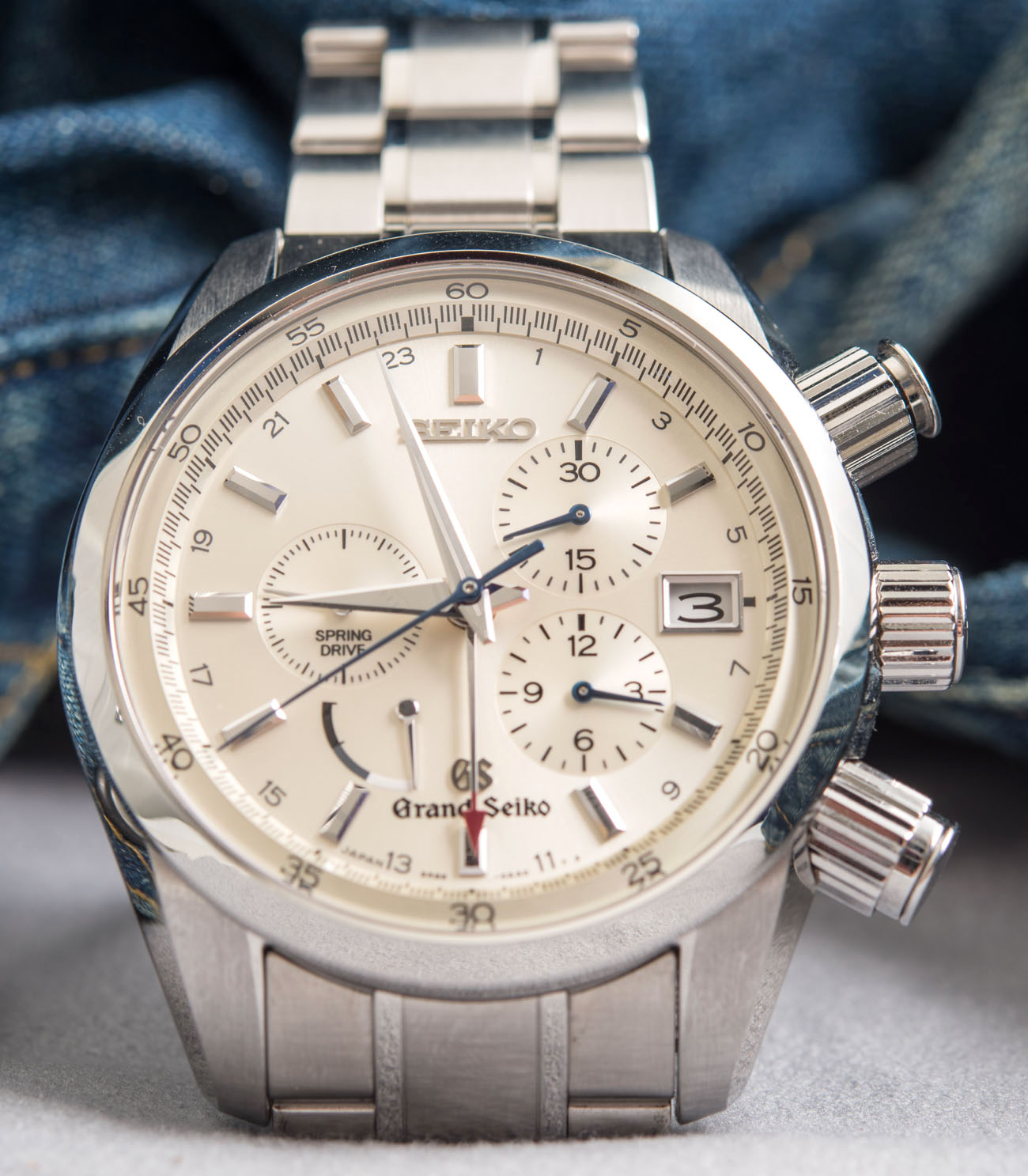
A Very Brief History Of The SBGC001
In 2007, it was the SBGC001, SBGC003, and SBGC004 with which Seiko (well, Grand Seiko) debuted the Spring Drive chronograph, the most complex mass-produced Spring Drive movement – other incredible, much more complex Spring Drive creations include this $50k+ 8-Day hand-wound and the one-and-only Credor Spring Drive Sonnerie.

Other variants of this Grand Seiko Spring Drive Chronograph include the black-silver dial SBGC003 in steel, the more recently debuted SBGC005 black-gold dial with identical case and bracelet design but crafted from titanium, and last but not least, the mega rare and simply bonkers SBGC004 in 18k pink gold… but it was the SBGC001 that was the “flagship product” Seiko chose when launching this movement and collection. If you don’t like the case design, alternative Spring Drive Chronographs include the very scarcely encountered SBGB001 and SPS003, two versions with slightly different case sizes and no bold-looking pushers.
The takeaway message here is that the Grand Seiko Spring Drive Chronograph SBGC001 has been in production unchanged since 2007.
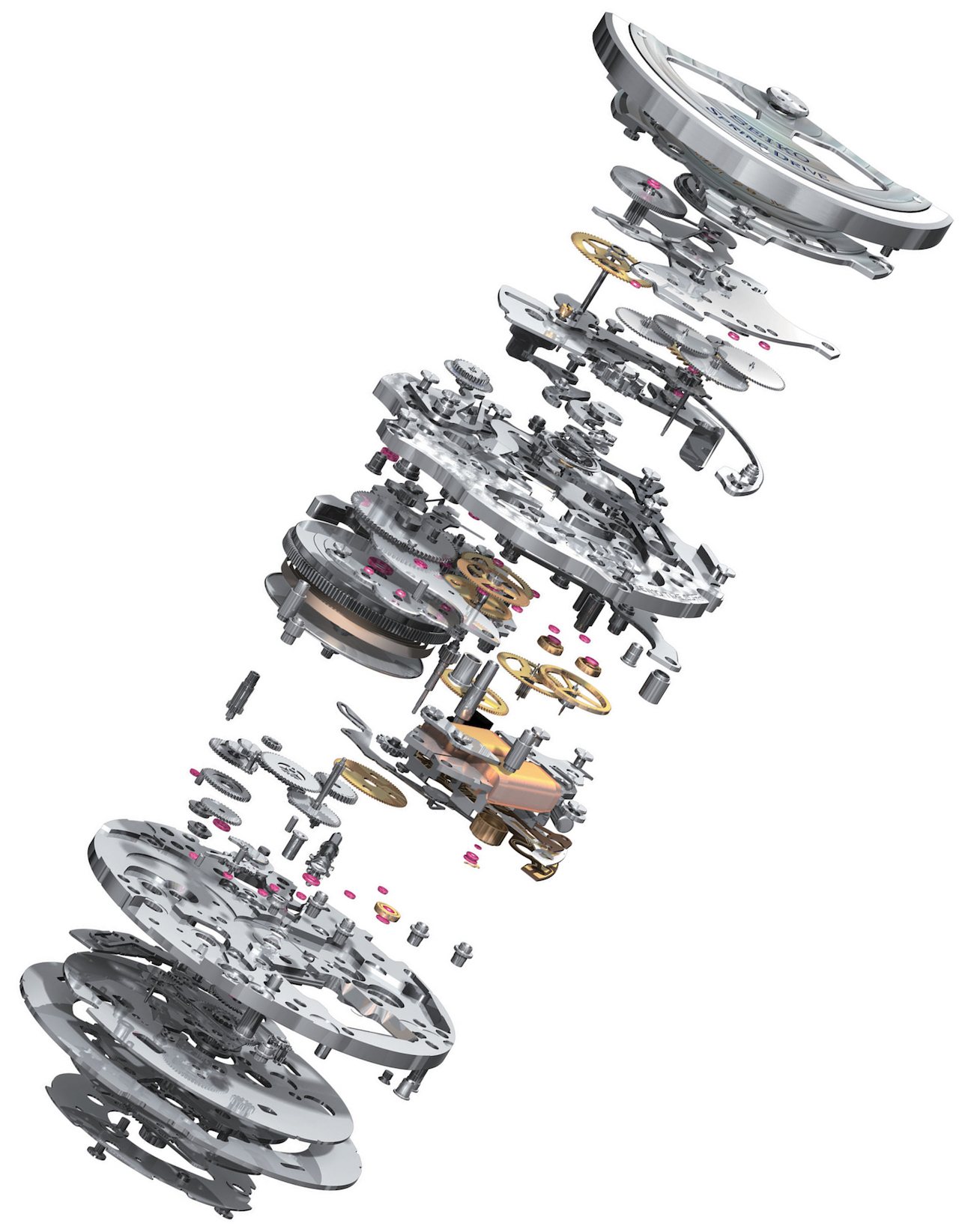
The Spring Drive Chronograph 9R86 Movement
Seiko says that “from the very first steps” in developing an automatic-winding Spring Drive it was among their goals to develop a chronograph with high accuracy. A bit over two years after their launch of the first automatic Spring Drive, they at last debuted the chronograph version with the 9R86 caliber in 2007. Seiko calls the 9R86 “by far the world’s most accurate chronograph driven by a mainspring.”
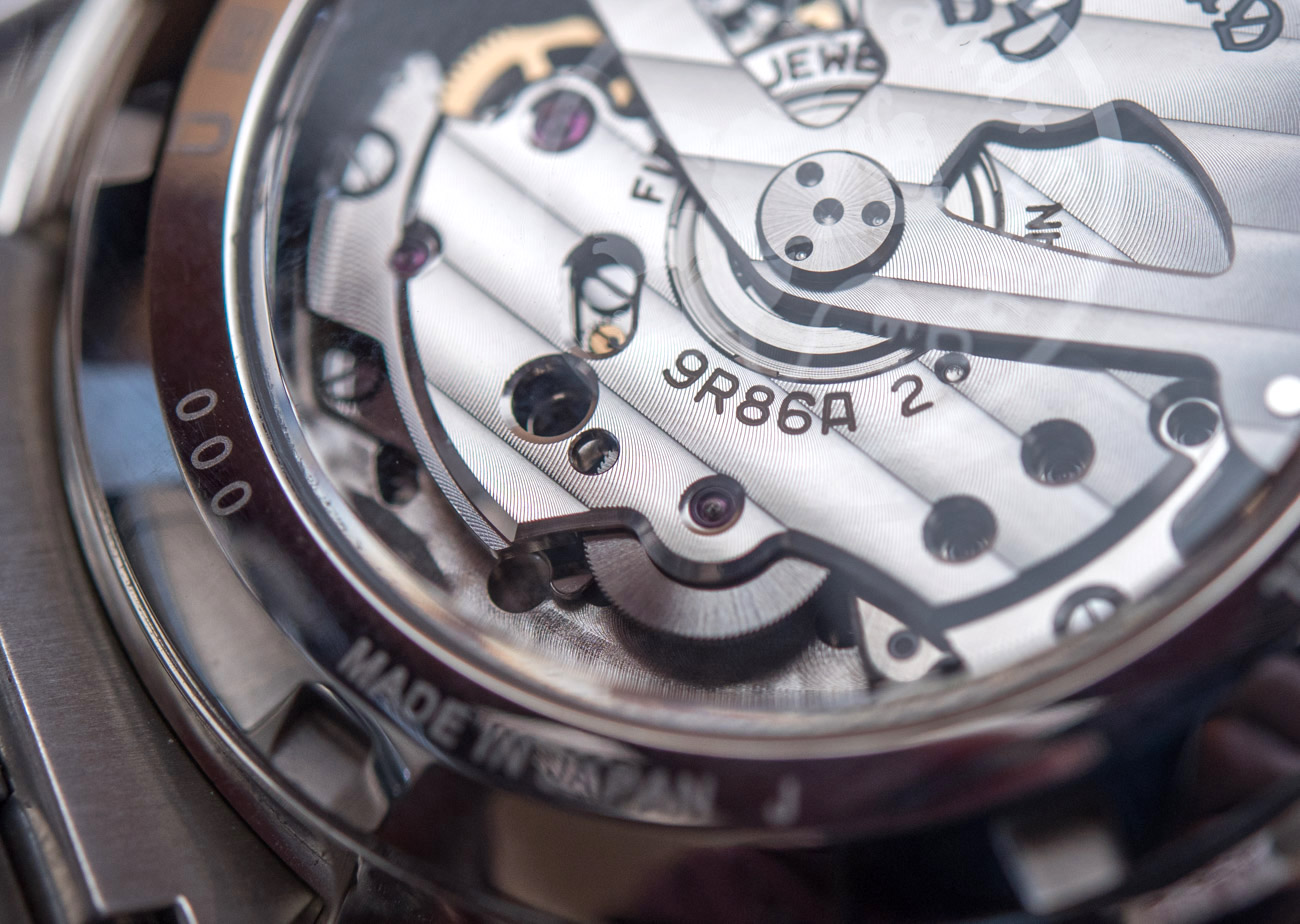
Seiko claims that the 9R86, as found in the SBGC001 and its similar-looking alternatives, is accurate to within +/-15 seconds a month or within a second a day – and these, as is always the case with Seiko, are the worst-case-scenario ranges. The particular watch subject of this review gained 5 seconds in 3 weeks, which could possibly be attributed to the extreme cold experienced during this period. I did wear the Grand Seiko Spring Drive Chronograph SBGC001 on bitterly cold days, down to -15 Celsius (5F) which clearly is pushing the limits.
Still, day after day, I must say I was baffled to see the seconds hand pass the zero mark just a few seconds off weeks after setting it to the minute jump of the reference synchronized atomic time I used.
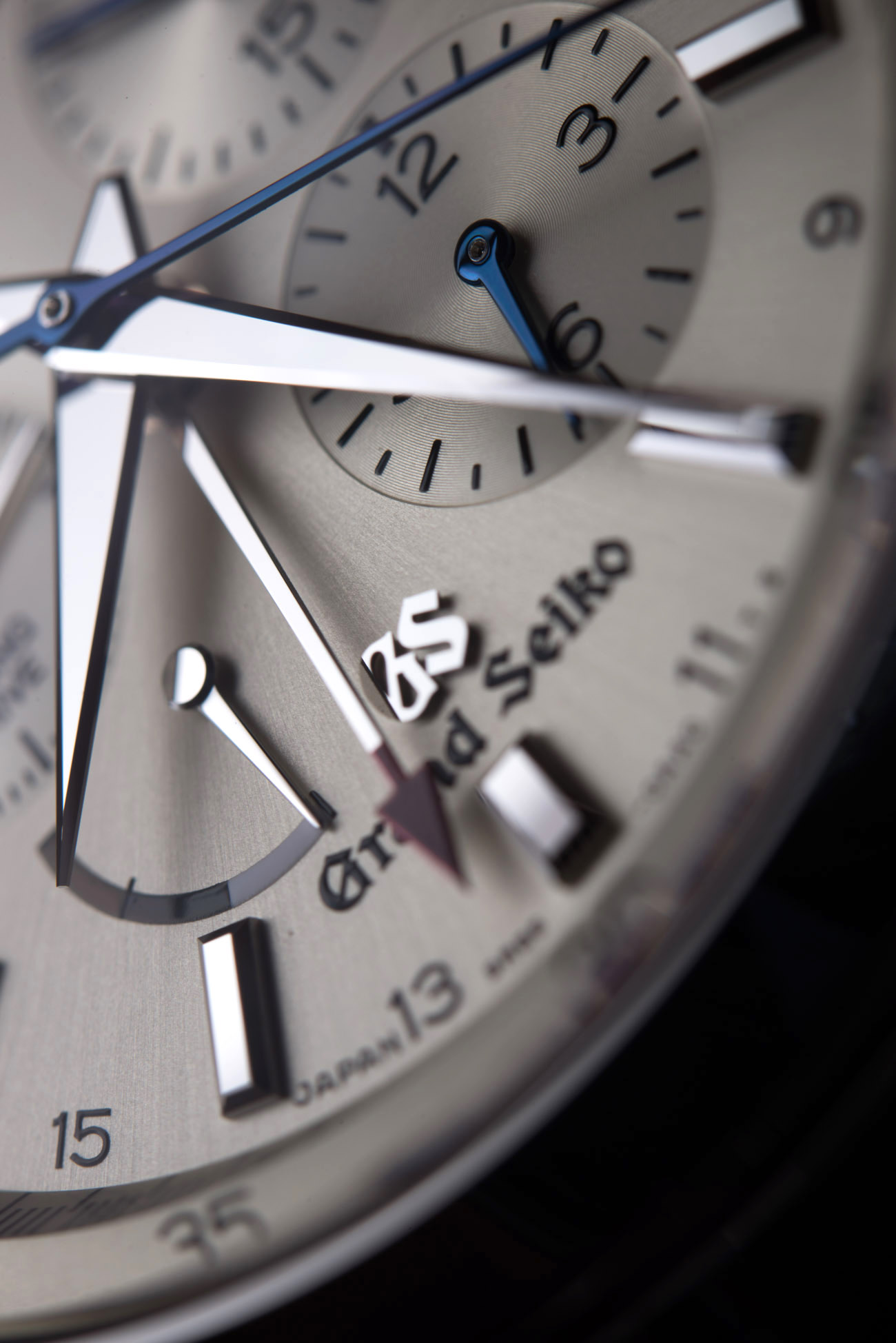
Whatever remains of the 72-hour power reserve is indicated on the dial at the 7 o’clock position on a scale split into three equal segments. In the aforementioned Spring Drive article, I discuss at length the details of Seiko’s Magic Lever automatic winding technology, so for now I’ll just say that it truly works brilliantly. Even a short walk at the end of the day can replenish a day’s worth of reserve as the super efficient, bi-directional winding never struggles to wind the single-barrel mainspring even when it is close to being fully wound. Hand-winding is eerily smooth as well, with a barely audible mechanical noise to it.
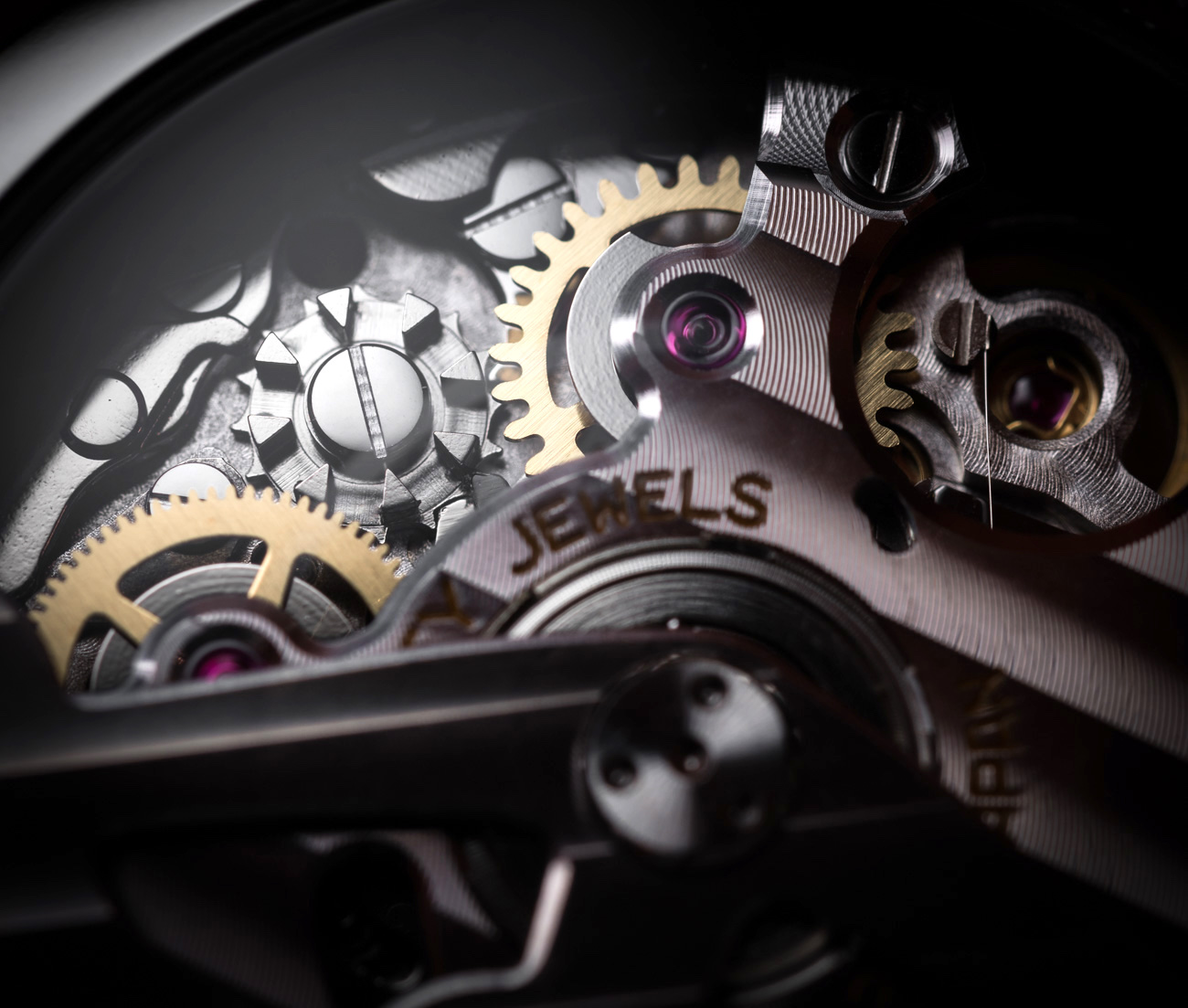
Remember the statement I began this article with? Well, this movement puts to shame so many “luxury chronographs” on the market today – I’m looking at you, Audemars Piguet, and your embarrassing 3Hz, modular chronograph… for $28,000. Seiko’s 9R86 is a fully integrated movement that comprises a whopping 416 parts, 50 jewels, a dizzying 140 oil points and requires the use of five different lubricants.
It offers three full days of power reserve, even when you leave the chronograph running. Speaking of which: the chronograph is equipped with a vertical clutch, which in and of itself is a rare, more complicated, more durable, and more accurate clutch system than the horizontal clutch you’ll find in nearly all other chronographs at this price point (and many others, for that matter).
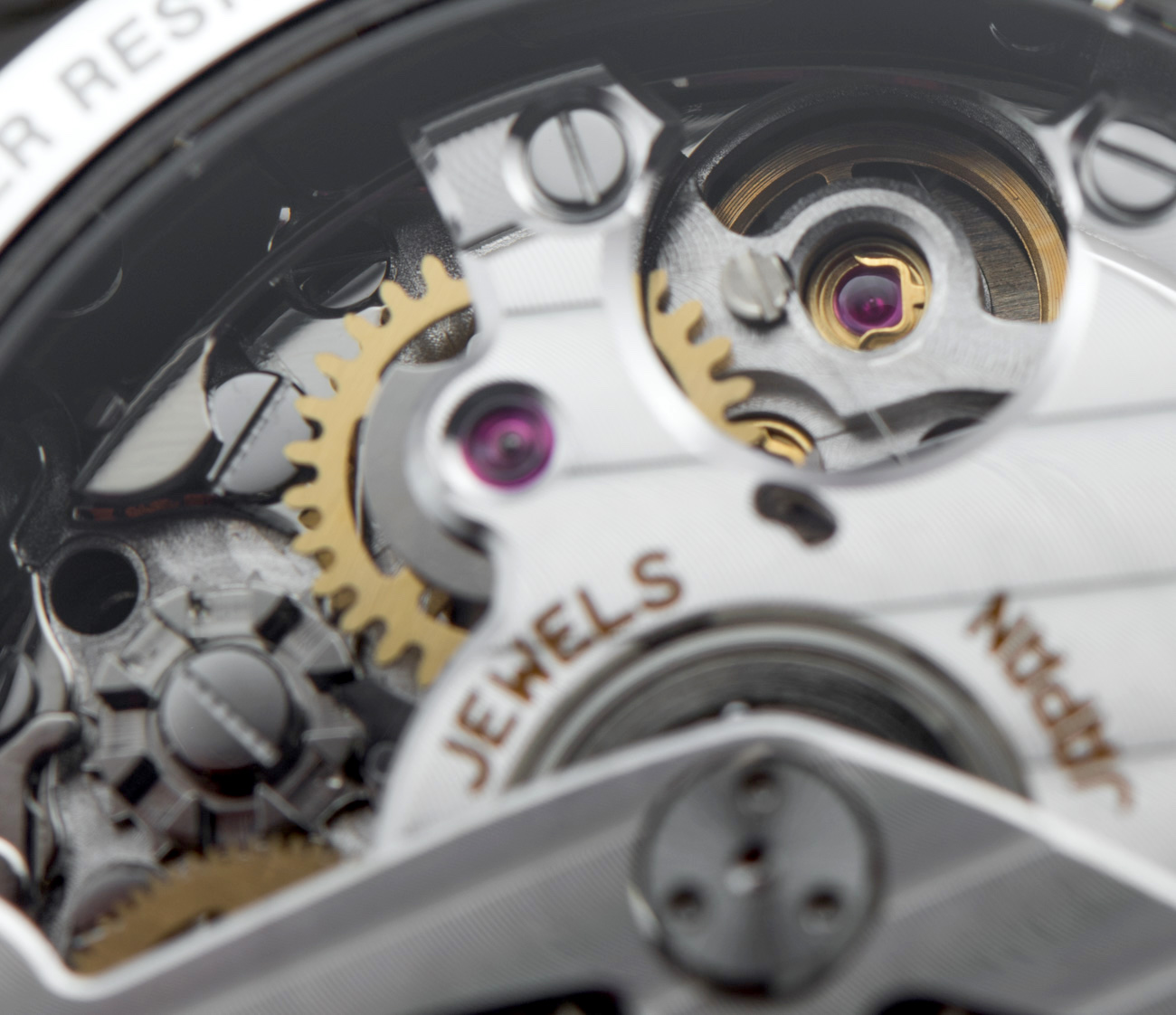
In the majority of chronographs the fourth wheel of the gear train carries another wheel over it – with these being directly linked to the gear train, these wheels are constantly turning. When you start the chronograph, this constantly turning wheel is pushed aside so as to mesh it with a wheel that is, at that moment, stationary. As the teeth of the turning and stationary wheels “meet,” a big jump of the chronograph seconds hand can occur, as well as a sudden strain on the entire gear train and power delivery.
By contrast, a vertical clutch is a small, about 5mm wide and 3mm tall, stack of various wheels and cams and other components wrapped around a pinion. This goes right in the center of the movement as at the top end of the clutch is central seconds of the chronograph. It is called vertical because the moment you start the chronograph, discs located above each other are pressed together so as to start driving the chronograph’s indications – and, conversely, when you stop the chronograph, the parts get separated. Because there are no teeth to mesh, the moment the discs’ flat surfaces meet/separate, the chronograph starts/stops.
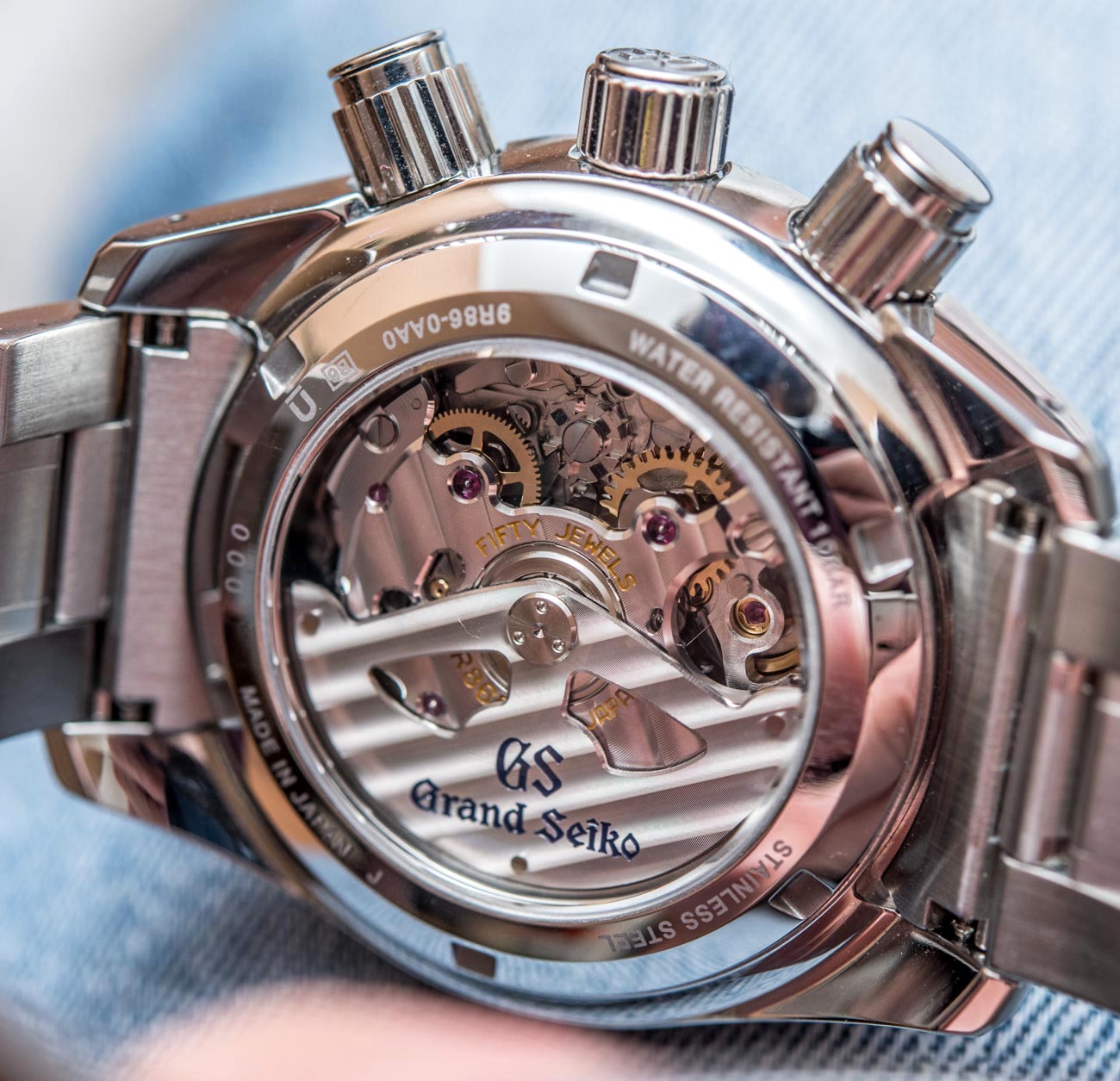
There is, of course, a column wheel also thrown in the mix for enhanced durability and one of the most solid-feeling pusher feedbacks ever engineered into a mechanical movement. Chronograph indications include central seconds and a more uniquely placed 30-minute and 12-hour totalizers on the right-hand side of the dial. As it always should be, the chronograph hands are color-matched – all three hands have been properly heated, not painted, to get to a deep blue shine.
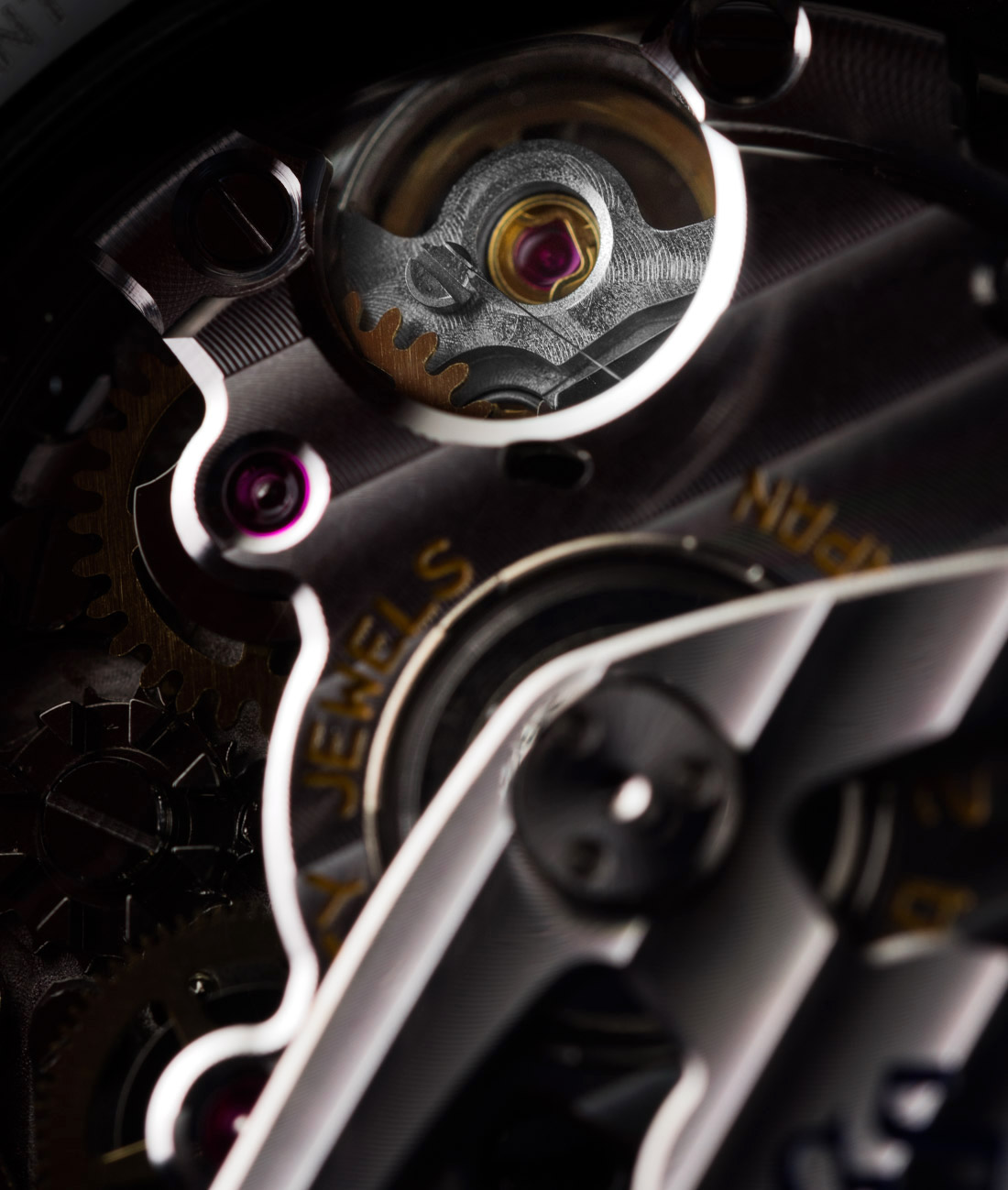
We’re not done yet, though, because there’s so much more to the 9R86 than just sheer performance. On show through a large sapphire crystal case-back, the movement fills up the large steel case nicely. All wrapped in silver coating, the rotor and the plates feature striped decorations, with the latter also sporting wide, polished, straight-beveled edges. Being a fully integrated caliber, you get to see more than just a boring time-only base movement that has its chronograph goodies on the dial side.
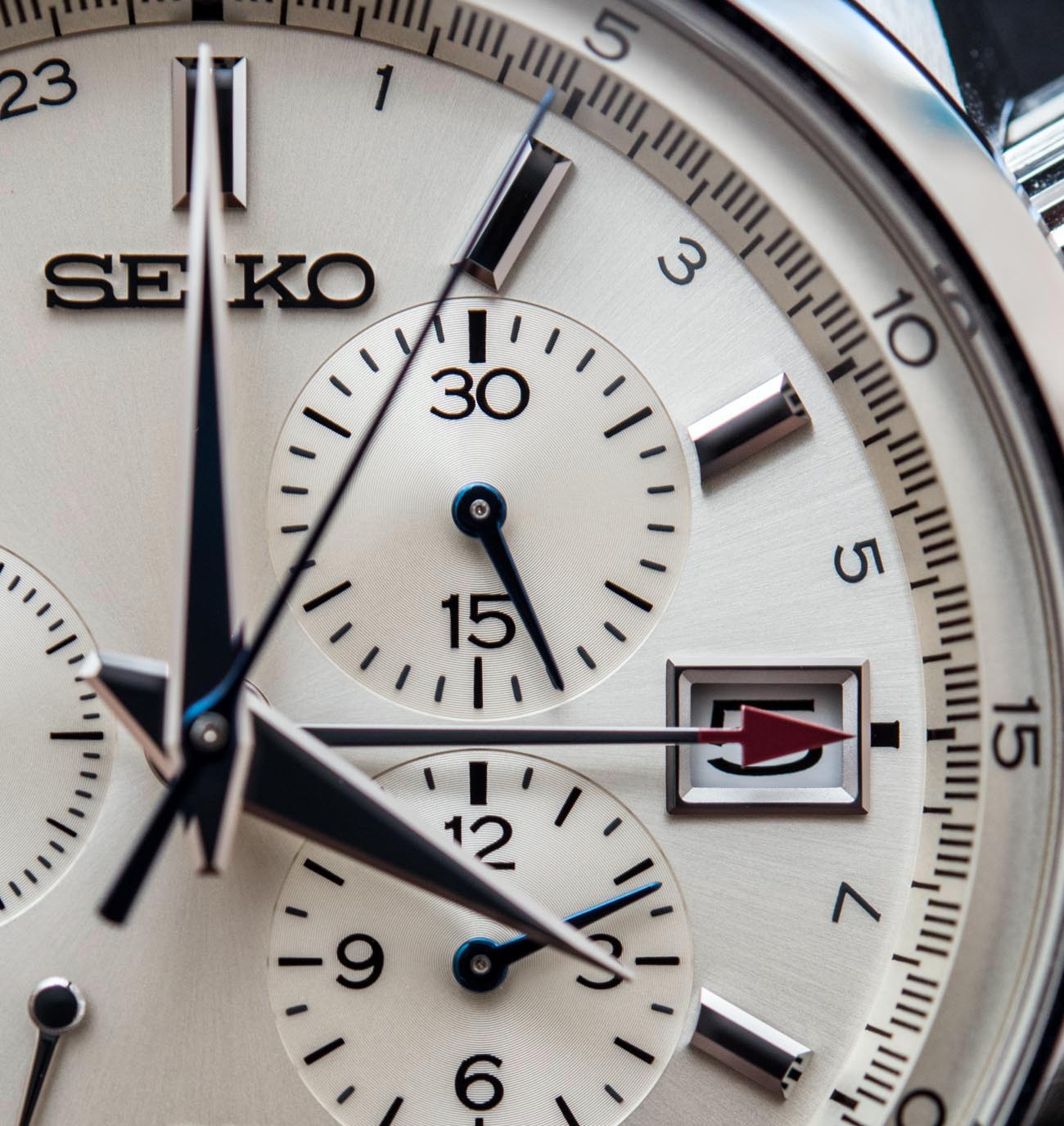
The 9R86 has a lot of depth to it, as the chronograph hours and minutes counters and the polished column wheel are prominently exposed in their symmetrical layout. It’s quite awe-inspiring to see how at Seiko they even had the capacity to concentrate on making the design as symmetrical as possible, as the column wheel falls directly under the crown and the two gold-colored wheels under the two large pushers. A layer further down, you’ll see the tirelessly spinning rotor of the Spring Drive movement.
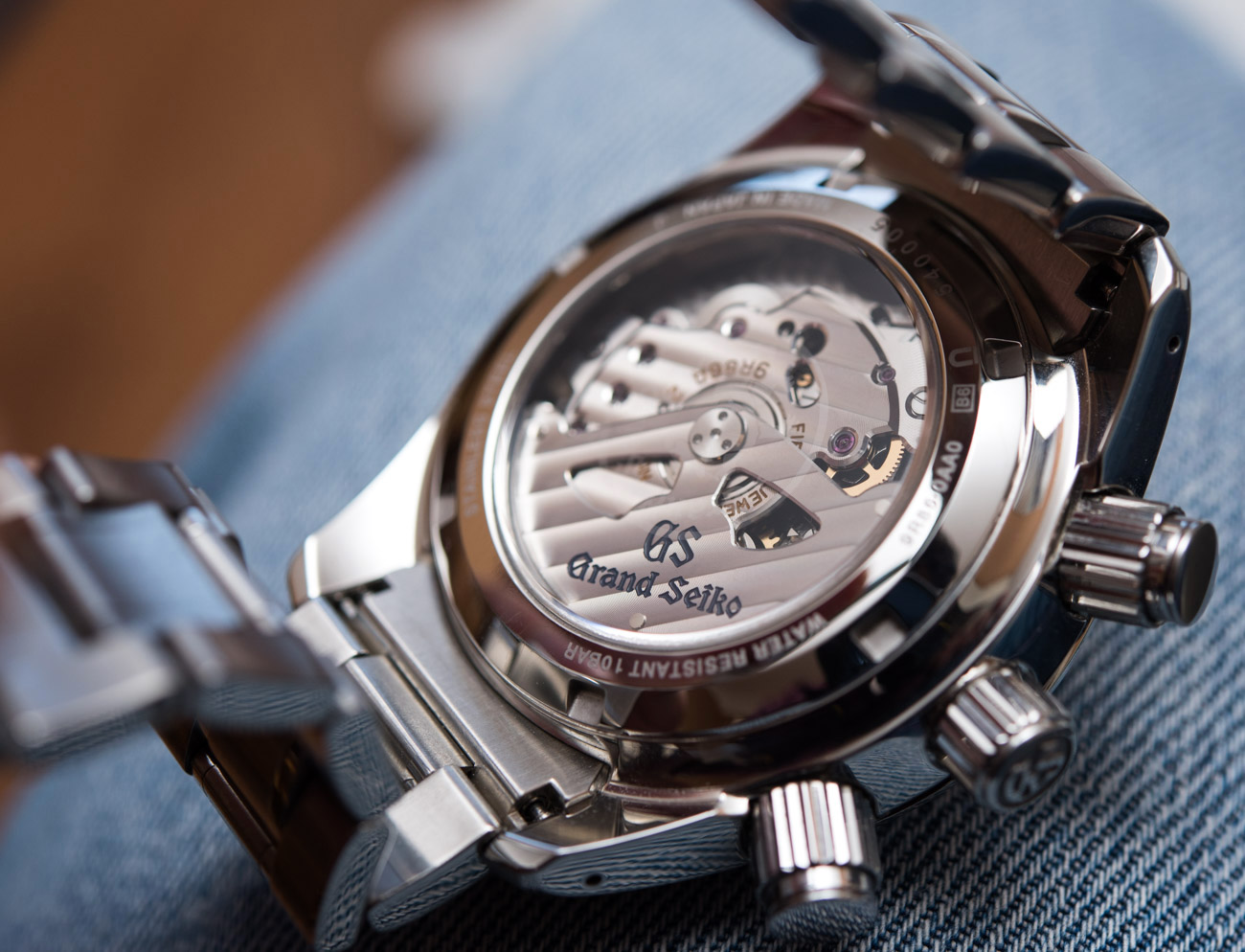
Finishing, then, is exceptionally good, and it’s a big plus that everything is on show. One unusual element to the finishing is how the edges of the stripes can reflect light in a way that creates a rainbow-like effect: if you have more direct light and take the watch off to have a better look at the movement, you’ll definitely see the colorful lines run across the winding rotor and plates. A pretty much impossible-to-photograph (or to see) element is the extremely subtle Grand Seiko words and lion emblem somehow faintly laser engraved into the center of the rear sapphire crystal. It’s ridiculously difficult to see, but it is there – just another one of the countless subtle, terrific, high-detail touches of the Grand Seiko Spring Drive Chronograph SBGC001.
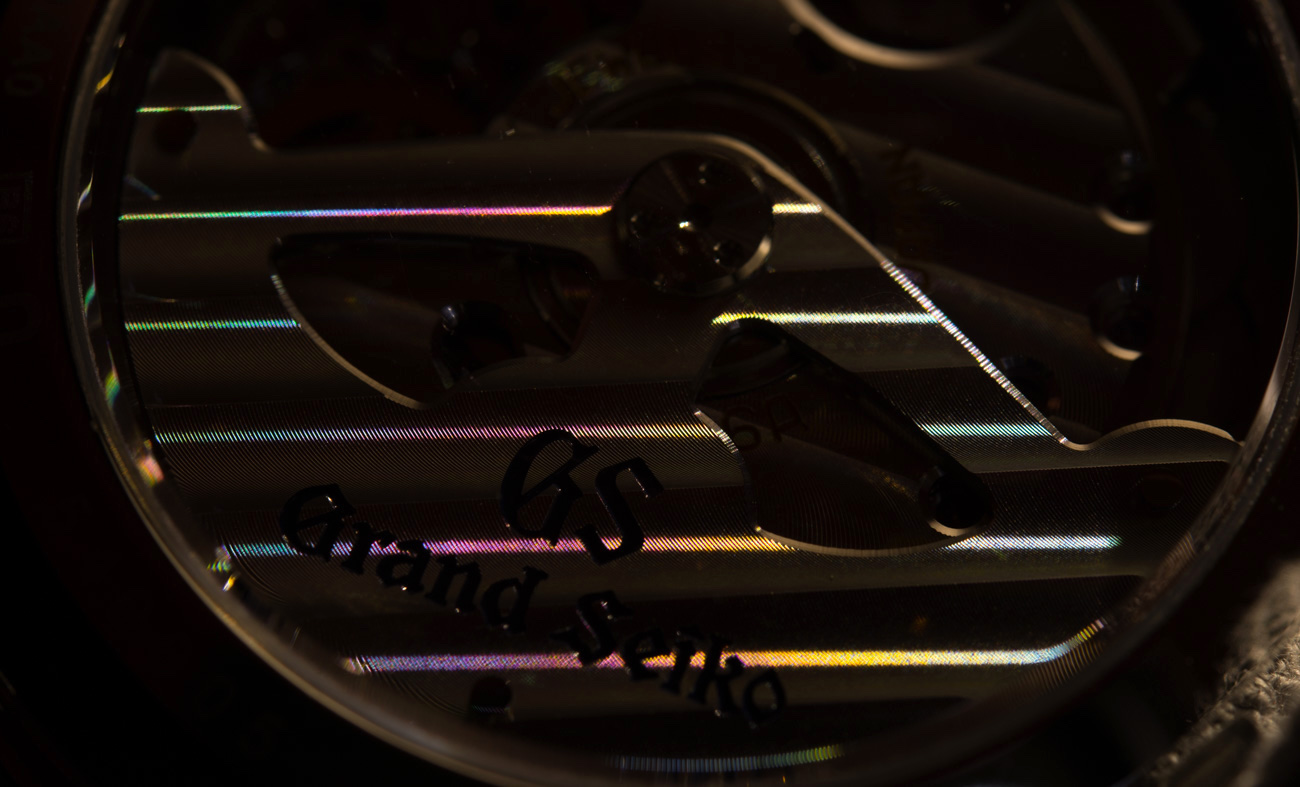
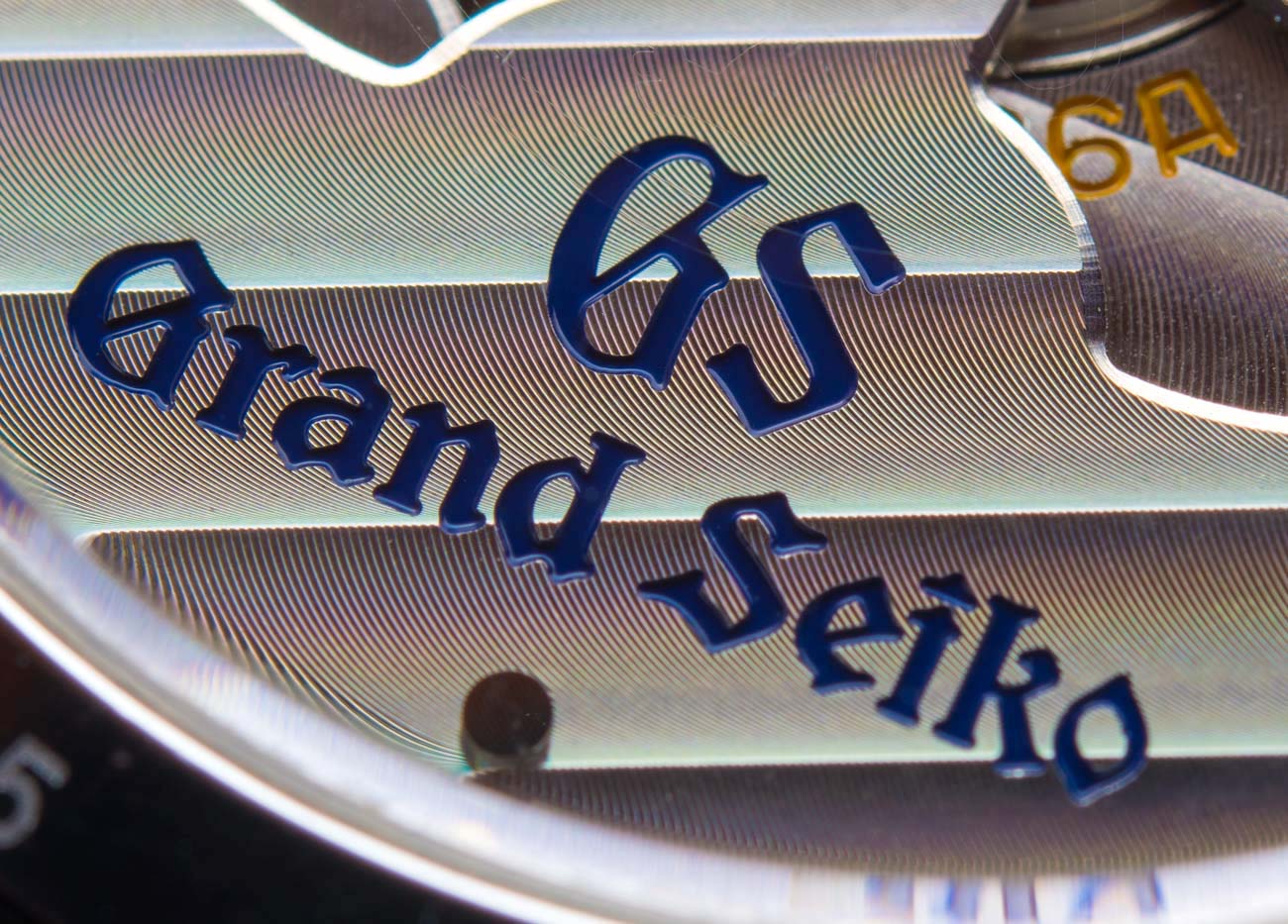
If you want even greater accuracy, look for watches with the recently updated 9R96 movement – it is essentially the same watch just with even more rigorously selected quartz crystals that help bring accuracy tolerance down to half a second per day or 10 seconds per month. It’s available in the much more expensive, titanium-ceramic SBGC013 with a blue dial, and the SBGC015 and SBGC017 with full ceramic, albeit huge, 46.4mm-wide cases.

